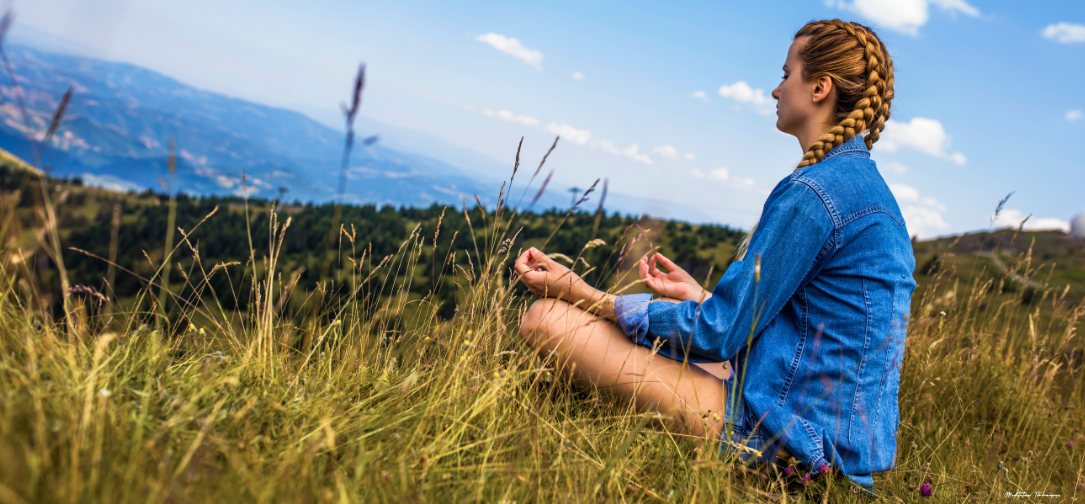Fitness & Wellness
Meditation Techniques for Beginners: How to Start a Daily Practice That Sticks

Meditation, once an ancient spiritual practice confined to the monasteries and sacred spaces of Eastern traditions, has now become a global phenomenon. Today, it is recognized not only as a path to spiritual enlightenment but also as a powerful tool for mental and physical well-being. In the hustle and bustle of modern life, where stress and anxiety have become pervasive, meditation offers a sanctuary of calm and clarity. However, for beginners, starting a meditation practice can seem daunting. Questions arise: Where do I begin? How do I meditate? What if I can’t keep my mind still? This article aims to demystify meditation for beginners and provide practical guidance on how to start a daily practice that sticks.
Understanding Meditation: A Brief Overview
Meditation is an umbrella term that encompasses a variety of techniques aimed at cultivating a focused and peaceful mind. It involves training the mind to remain present and aware, often by concentrating on a specific object, thought, or activity. Meditation has roots in numerous spiritual and philosophical traditions, including Buddhism, Hinduism, Taoism, and even some forms of Christianity. Despite its ancient origins, meditation has found a firm place in contemporary wellness practices due to its scientifically proven benefits.
The Science Behind Meditation
Over the past few decades, scientific research has increasingly validated the benefits of meditation. Studies have shown that regular meditation can lead to a reduction in stress, anxiety, and depression, improved attention and memory, and even physical benefits like lower blood pressure and improved immune function. Neuroscientific research has demonstrated that meditation can change the structure and function of the brain, enhancing areas associated with attention, emotional regulation, and self-awareness. This emerging body of evidence has contributed to the widespread adoption of meditation as a tool for improving mental and physical health.
Why Meditation is Challenging for Beginners
While the benefits of meditation are clear, starting a meditation practice can be challenging for beginners. Common obstacles include:
Restless Mind: One of the most common experiences for beginners is the restless or “monkey mind” — a mind that jumps from one thought to another without settling. This can be frustrating and may lead some to believe they are not “doing it right.”
Unrealistic Expectations: Many beginners start meditation with the expectation that they will experience immediate peace and clarity. When this does not happen, they may feel discouraged and give up.
Time Management: In a busy world, finding time to meditate can be challenging. Many people struggle to fit meditation into their daily routine, leading to inconsistency.
Physical Discomfort: Sitting still for an extended period can cause physical discomfort, especially for those who are not accustomed to it. This can become a distraction and make it difficult to focus.
Lack of Guidance: Without proper guidance, beginners may not know how to start or what techniques to use, leading to confusion and frustration.
Understanding these challenges is the first step in overcoming them. The key to a successful meditation practice is patience, persistence, and the willingness to experiment with different techniques until you find what works for you.

Essential Meditation Techniques for Beginners
There are numerous meditation techniques, each with its unique approach and benefits. Here are some of the most accessible and effective techniques for beginners:
1. Mindfulness Meditation
Mindfulness meditation is perhaps the most well-known and widely practiced form of meditation in the West. It involves paying attention to the present moment without judgment. The goal is to cultivate a heightened awareness of your thoughts, feelings, and sensations as they arise, without getting caught up in them.
How to Practice:
- Find a comfortable, quiet place to sit.
- Close your eyes and take a few deep breaths to center yourself.
- Focus your attention on your breath, noticing the sensation of the air moving in and out of your nostrils, the rise and fall of your chest, or the expansion and contraction of your abdomen.
- When your mind wanders (and it will), gently bring your attention back to your breath without judgment.
- Start with just 5-10 minutes and gradually increase the duration as you become more comfortable with the practice.
Benefits: Mindfulness meditation is known to reduce stress, improve concentration, and enhance emotional regulation. It is a great starting point for beginners because it is simple and can be practiced anywhere.
2. Focused Attention Meditation
Focused attention meditation involves concentrating on a single object, such as the breath, a mantra, or a candle flame. The goal is to train the mind to maintain a single-pointed focus, thereby reducing mental chatter and enhancing concentration.
How to Practice:
- Sit comfortably in a quiet place.
- Choose an object of focus. It could be your breath, a word or phrase (mantra), or a physical object like a candle flame.
- Direct your attention to the chosen object, observing it closely.
- When your mind wanders, gently redirect your focus back to the object.
- Start with 5-10 minutes and gradually increase the time.
Benefits: This technique helps to improve concentration and mental clarity. It is especially useful for those who struggle with a restless mind, as it provides a clear point of focus.
3. Body Scan Meditation
Body scan meditation is a type of mindfulness practice that involves systematically bringing attention to different parts of the body. It is particularly helpful for cultivating a connection between the mind and body and for releasing physical tension.
How to Practice:
- Lie down or sit comfortably.
- Close your eyes and take a few deep breaths.
- Begin by focusing on your toes, noticing any sensations or tension. Then, slowly move your attention up through your feet, legs, torso, arms, and head, spending a few moments on each area.
- If you notice any tension, try to consciously relax that area.
- Complete the scan by taking a few deep breaths and gradually bringing your awareness back to the present moment.
Benefits: Body scan meditation helps to reduce physical tension and promote relaxation. It also enhances body awareness, making it a good practice for those who experience stress-related physical discomfort.
4. Loving-Kindness Meditation (Metta)
Loving-kindness meditation, also known as Metta, involves cultivating feelings of compassion and love towards yourself and others. This practice can help to develop empathy, reduce anger, and enhance emotional well-being.
How to Practice:
- Sit comfortably and close your eyes.
- Begin by focusing on yourself. Silently repeat phrases like “May I be happy, may I be healthy, may I be safe, may I live with ease.”
- After a few minutes, shift your focus to someone you love, repeating similar phrases for them: “May you be happy, may you be healthy…”
- Gradually extend these wishes to others, including people you are neutral towards and even those with whom you have difficulties.
- End the practice by extending loving-kindness to all beings.
Benefits: Loving-kindness meditation promotes positive emotions, increases empathy, and can help to heal relationships. It is particularly beneficial for those struggling with feelings of anger or resentment.
5. Guided Meditation
Guided meditation involves listening to a recorded meditation or following a live instructor who leads you through the practice. This can be helpful for beginners who find it difficult to meditate on their own.
How to Practice:
- Find a comfortable place to sit or lie down.
- Choose a guided meditation that suits your needs. There are many apps and online platforms that offer a wide variety of guided meditations, ranging from mindfulness to relaxation to sleep-focused practices.
- Put on your headphones, close your eyes, and follow the instructions.
Benefits: Guided meditation provides structure and support, making it easier for beginners to stay focused. It is also a great way to explore different types of meditation and find what resonates with you.
6. Walking Meditation
Walking meditation combines mindfulness with movement. It involves paying attention to the sensations of walking, such as the feeling of your feet touching the ground and the movement of your legs.
How to Practice:
- Find a quiet place where you can walk slowly and undisturbed.
- As you walk, focus on the sensations in your feet and legs. Notice how your body moves with each step.
- You can also synchronize your breathing with your steps, inhaling for a few steps and exhaling for a few steps.
- If your mind wanders, gently bring your attention back to the sensation of walking.
Benefits: Walking meditation is a great option for those who find it difficult to sit still. It promotes mindfulness and can also be a calming way to incorporate physical activity into your routine.

Building a Daily Meditation Practice That Sticks
Starting a meditation practice is one thing; maintaining it is another. Here are some tips to help you build a daily meditation practice that sticks:
1. Start Small and Be Consistent
Consistency is key when it comes to meditation. It’s better to meditate for a few minutes every day than to meditate for an hour once a week. Start with just 5-10 minutes a day and gradually increase the duration as you become more comfortable with the practice. The important thing is to make meditation a daily habit.
2. Choose a Regular Time
Having a regular time for meditation can help you build a habit. Whether it’s first thing in the morning, during lunch, or before bed, find a time that works for you and stick to it. This will help make meditation a natural part of your daily routine.
3. Create a Meditation Space
Having a dedicated space for meditation can help set the mood and signal to your mind that it’s time to meditate. This doesn’t have to be an entire room — just a quiet corner with a cushion, a candle, or some calming decorations will do. The important thing is to create a space that feels peaceful and inviting.
4. Be Patient with Yourself
Meditation is a skill that takes time to develop. It’s normal to experience restlessness, distractions, or frustration, especially in the beginning. Be patient with yourself and remember that there is no “perfect” way to meditate. Every meditation session is an opportunity to practice and learn.
5. Use Technology Wisely
There are many apps and online platforms that offer guided meditations, timers, and other tools to support your practice. These can be especially helpful for beginners who need some guidance and structure. However, be mindful of becoming too reliant on technology — it’s important to also practice meditation without external aids.
6. Reflect on Your Practice
Taking a few moments to reflect on your meditation practice can help you gain insight and stay motivated. After each session, consider journaling about your experience. What thoughts or emotions came up? How did your body feel? Over time, this reflection can help you deepen your practice and track your progress.
7. Be Open to Experimentation
There is no one-size-fits-all approach to meditation. Different techniques work for different people, and it’s important to be open to experimentation. Try different forms of meditation — mindfulness, focused attention, loving-kindness, body scan, etc. — and see what resonates with you. Over time, you may find that your practice evolves and incorporates multiple techniques.
8. Incorporate Mindfulness into Daily Life
While formal meditation is important, incorporating mindfulness into your daily life can enhance your practice and make it easier to meditate regularly. Practice being present in everyday activities, such as eating, walking, or even washing the dishes. This can help you stay connected to the present moment and bring a sense of calm and clarity to your day.
9. Join a Meditation Group or Community
Meditating with others can provide support, encouragement, and a sense of accountability. Consider joining a local meditation group, attending a meditation class, or participating in an online community. This can also be a great way to learn from more experienced meditators and explore different meditation techniques.
10. Don’t Give Up
There will be days when meditation feels difficult or when you miss a session. This is normal, and it’s important not to get discouraged. Remember that meditation is a journey, not a destination. If you miss a day, just start again the next day. The most important thing is to keep showing up for yourself.

Conclusion: The Journey of Meditation
Meditation is a powerful tool for cultivating inner peace, clarity, and well-being. For beginners, the journey can be challenging, but with patience, persistence, and the right guidance, it is entirely possible to develop a daily meditation practice that sticks. Start small, be consistent, and remain open to experimentation. Over time, you will find that meditation not only becomes a habit but also a source of strength and resilience in your life.
As you embark on this journey, remember that meditation is not about achieving a particular state of mind or reaching a specific goal. It is about being present with whatever arises, whether it is peace or discomfort, clarity or confusion. Through this practice, you will discover that the true benefits of meditation lie not in the absence of thoughts or emotions, but in your ability to observe them with compassion and non-judgment.
Meditation is a lifelong practice, and like any other skill, it requires time and dedication. But with each session, you are taking a step towards greater self-awareness, inner peace, and a deeper connection with the present moment. And that is a journey worth undertaking.

-

 Press Release6 days ago
Press Release6 days agoClinical Trials Market Set for Robust Growth, Driven by Drug Development Surge and Digital Innovation
-

 Press Release6 days ago
Press Release6 days agoPediatric Vaccines Market: Safeguarding Futures, Driving Growth
-

 Press Release7 days ago
Press Release7 days agoWaterproof Structural Adhesives Market: A Comprehensive Study Towards USD 10.3 Billion in 2035
-

 Press Release7 days ago
Press Release7 days agoDownhole Tools Market: Navigating Subsurface Frontiers with Precision
-

 Press Release6 days ago
Press Release6 days agoFaropenem Sodium Market: A Potent Weapon in the Fight Against Bacterial Infections






























